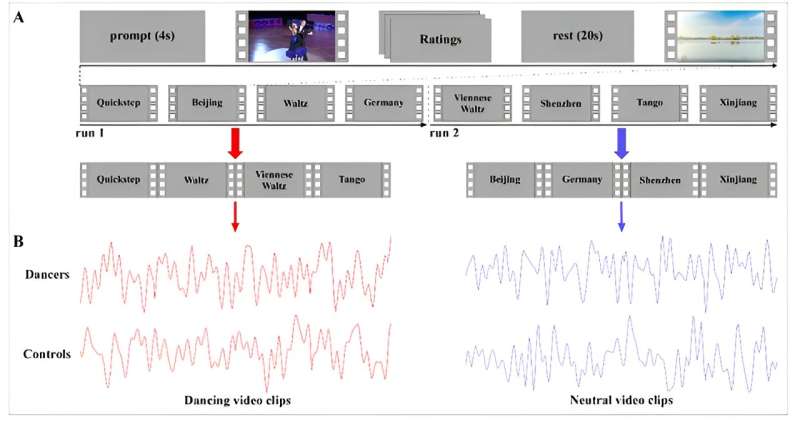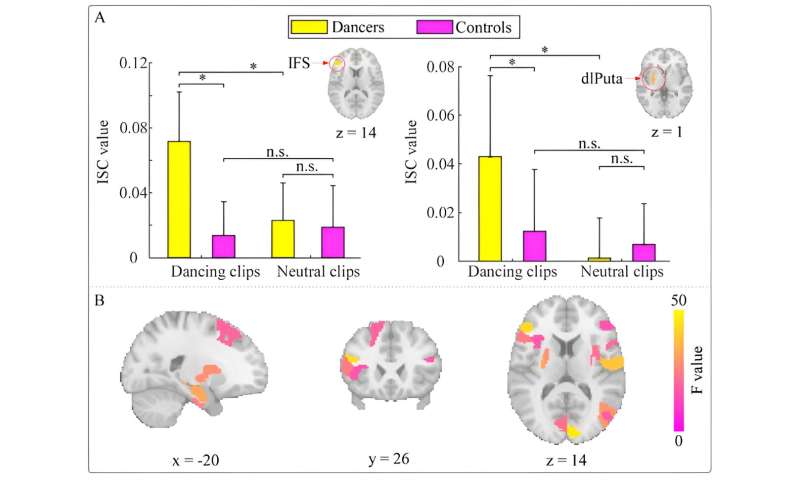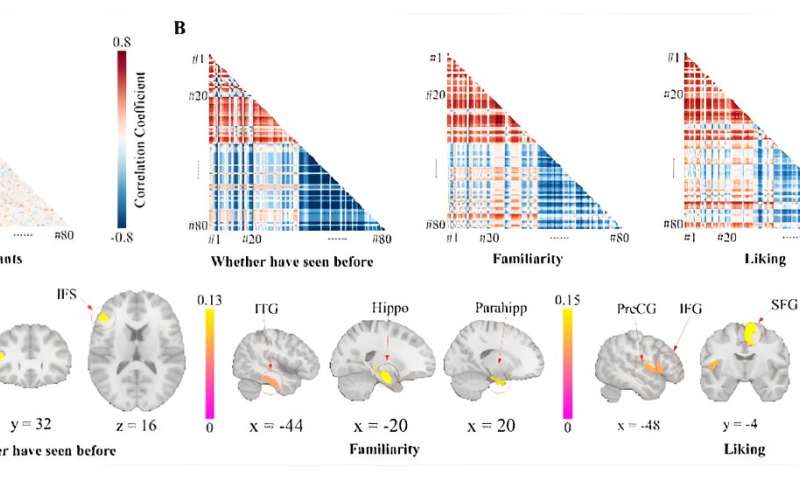This article has been reviewed according to Science X's editorial process and policies. Editors have highlighted the following attributes while ensuring the content's credibility:
fact-checked
peer-reviewed publication
trusted source
proofread
Research team finds ballroom dance training enhances neural synchrony

Ballroom dance is an art form of body-to-body communication. Professional dancers may share feelings and thoughts about dancing, especially with their partners.
To measure the neural similarity of dancers, a novel statistical approach called intersubject correlation (ISC) could be used. In addition, intersubject representational analysis (ISRSA), which is an extension of ISC, would be helpful to investigate the correlation between neural similarity and behavioral similarity.
Led by Dr. Hu Li and Dr. Kong Yazhuo from the Institute of Psychology of the Chinese Academy of Sciences, a research team found brain mechanism evidence that neural similarity could be promoted by long-term ballroom dance training.
In this exploratory study, 41 professional ballroom dancers and 39 age- and gender-matched controls were recruited from the Beijing Sport University. During the experiment, training information was collected from the dancers. High-resolution functional magnetic resonance imaging (MRI) and structural MRI images were also collected. Participants watched four dance videos and four neutral videos in the same order. Video ratings (whether seen before, familiarity, and liking) were also collected after each video.
Results showed that ISC was higher for dancers watching dance videos than for controls and natural videos. Enhanced neural synchrony was mainly observed in the inferior frontal gyrus, precentral and postcentral gyrus, and inferior parietal lobule. The work is published in the journal NeuroImage.
In addition, correlations between ISC values and dancer information were found, e.g., years of cooperation between partners were positively correlated with their ISC in the left globus pallidus.
-

Brain regions showed higher ISC for dancers watching dancing videos than other conditions. Credit: Dr. Hu Li -

Brain regions correlated with impressions on dancing videos. Credit: Dr. Hu Li
Furthermore, ISRSA showed a significant correlation between video impression and ISC, e.g., familiarity similarity positively correlated with ISC in the hippocampus and parahippocampus.
This study discovered the close relationship between long-term ballroom dancing and neural similarity and explored its underlying brain mechanisms. Neural similarity may provide a neural indicator to define an optimal cooperative partner in the future.
More information: Xiao Wu et al, Enhanced neural synchrony associated with long-term ballroom dance training, NeuroImage (2023). DOI: 10.1016/j.neuroimage.2023.120301





















